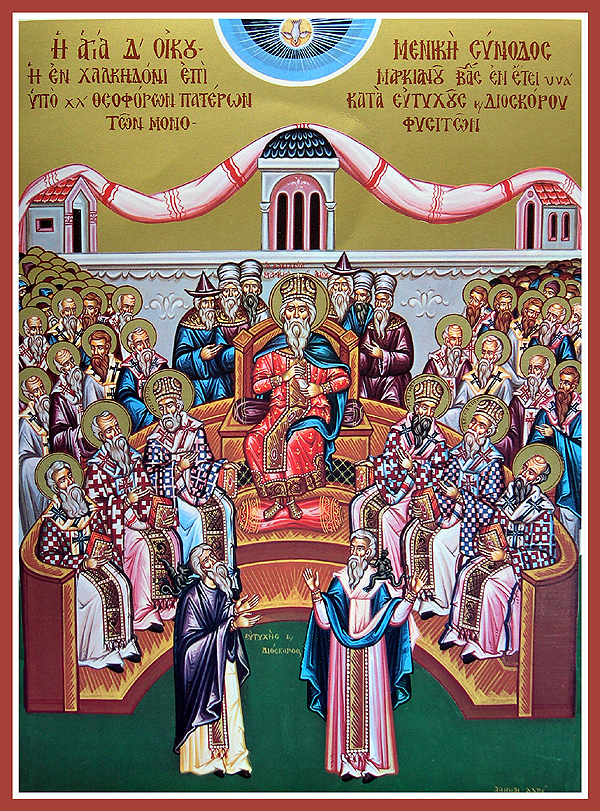The Fourth Ecumenical Council

Together, in 451, Emperor Marcian and Empress Pulcheria called another general council, this time on a far broader scale, to give the Church the opportunity to resolve the differences while still being completely faithful to the Nicene Creed. This illustrious council became known as the Fourth Ecumenical Council. With 630 bishops in attendance, it was the largest of all seven of the Ecumenical Councils. It was held in Chalcedon, not far from Constantinople, in Asia Minor.
This council defended the teaching of Saint Cyril on the “hypostatic union” of Christ’s divine and human natures as expressed at the Council of Ephesus of 431. It also expressed the Antiochian emphasis on the genuine humanity of Jesus as expressed in the Formulary of Peace, as well as the Roman emphasis on the ongoing distinctiveness of the fully divine and fully human natures of Christ, as expressed in the language of Leo’s Tome. Indeed, when Leo’s Tome was read, all the bishops were reported to have cried out, “Peter has spoken through Leo!” But the Pope’s statement was not the last word. It also was subjected to scrutiny by the fathers at the Council, who decided to select parts of it to be woven into the Council’s final doctrinal definition.
The Chalcedonian Definition states that Jesus Christ is indeed the Logos incarnate, the very Son of God “begotten of the Father before all ages” (Nicene Creed). It reaffirms that the Virgin Mary is truly Theotokos, since the one born from her “according to the flesh” in Bethlehem is the uncreated, divine Son of God, one of the Holy Trinity. In His human birth, the Council declared, the Word of God took to Himself the whole of humanity, becoming a real man in every way, but without sin. Thus, according to the Chalcedonian Definition, Jesus of Nazareth is one person or hypostasis in two natures—human and divine—united “without change, without confusion, without division, without separation.” He is fully human. He is fully divine. He is perfect God and perfect man. As God, He is “of one essence” (homoousios) with God the Father and the Holy Spirit. And as man, He is “of one essence” (homoousios) with all human beings, as the Formulary of Peace had declared.
The union of divinity and humanity in Christ is called the hypostatic union. This expression means that in the one, unique person, or divine hypostasis, of Christ, divine nature and human nature are united in such a way that they are neither changed, nor confused, nor separated, nor divided. Christ is one Person Who is both human and divine. One and the same divine person (or hypostasis) is the Son of God and the Son of Mary.
